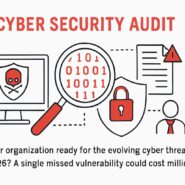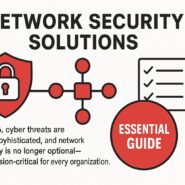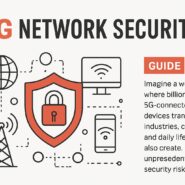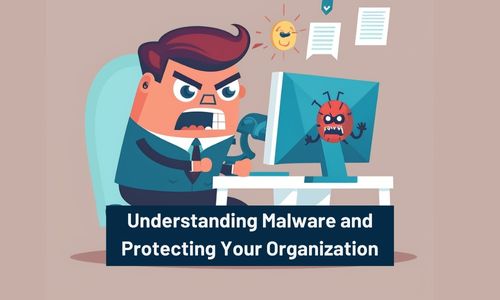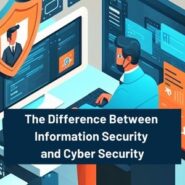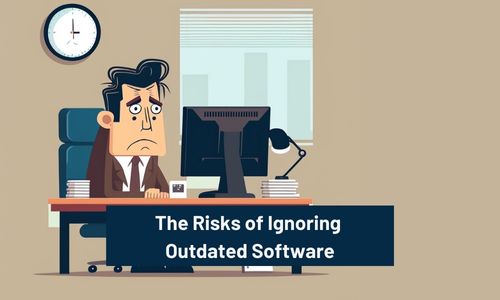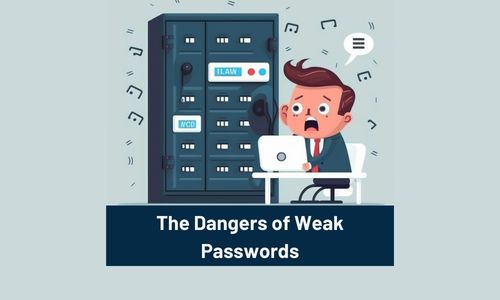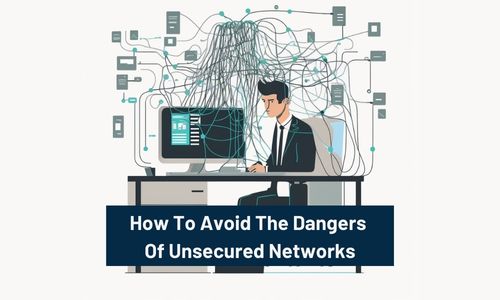
Malware is malicious software designed to infiltrate a computer or system without the user’s knowledge. It can steal data, sabotage systems, and damage files.
While malware can be difficult to detect, understanding how it works is essential for any business or organization that wants to stay protected from cyber attacks. Let’s look at malware and some of the best ways to protect your organization.
What Is Malware?
Malware—short for “malicious software”—is any malicious program that infiltrates computers without the user’s knowledge to steal information or damage files. It includes viruses, worms, ransomware, spyware, Trojan horses, bots, adware, keyloggers, rootkits, and more.
Hackers create common types of malware to access a computer system or network. Other types of malware are designed by criminals to extort money from companies or organizations by locking them out of their systems until a ransom is paid.
How To Protect Your Organization From Malware
Layered security measures are the best way to protect your organization from malware. This means implementing multiple layers of security to make it more difficult for hackers and other malicious actors to penetrate your systems.
This can include using firewalls, and antivirus programs, limiting user access privileges on specific techniques or networks, ensuring all software is up-to-date with the latest patches and updates, monitoring network traffic for suspicious activity, restricting downloads from unknown sources, and using two-factor authentication whenever possible.
Additionally, educating employees on cybersecurity best practices can help reduce the risk of an attack and limit its impact should one occur.
Regularly training staff on identifying potential threats and safeguarding confidential data can go a long way in preventing cyberattacks from occurring in the first place.
Furthermore, having a plan in place for responding quickly if an attack happens can help minimize any potential damage caused by the attack and ensure that your organization remains compliant with relevant data protection and privacy laws and regulations.
Different Malware Types
Malware, short for malicious software, is designed to harm, damage, or disrupt computer systems, networks, or devices. Here are some common types of malware:
- Virus: Malware infects a computer by attaching itself to a file or program and spreading from one computer to another.
- Worm: A worm is Malware that spreads through computer networks and can replicate itself without needing a host program.
- Trojan: A Trojan is Malware disguised as legitimate software designed to steal data, damage systems, or create a backdoor for attackers to gain unauthorized access.
- Ransomware: Ransomware is malware that encrypts a victim’s files and demands payment for the decryption key.
- Spyware: Spyware is a type of malware used to gather information about a user’s activities without their knowledge or consent.
- Adware: Adware is malware that displays unwanted advertisements on a user’s computer or device.
- Rootkit: A rootkit is Malware designed to gain root-level access to a computer system, giving attackers complete control over the system.
- Botnet: A botnet is a network of infected computers that a remote attacker controls, typically to carry out coordinated attacks or spam campaigns.
It’s essential to use reliable antivirus software, keep your operating system and software up to date, and exercise caution when opening email attachments or downloading files from the internet to protect yourself from malware.
Malware protection Checklist
To protect your organization against malware, here are some critical steps to take:
- Implement robust security policies: Develop and implement security policies that cover best practices for password management, software updates, access control, and employee training. These policies should be regularly reviewed and updated to ensure they remain effective.
- Use reputable antivirus software: Use reputable antivirus software and ensure it is kept up-to-date to detect and remove any malware that may be present on your systems.
- Keep software up-to-date: Ensure all software, including operating systems, applications, and plugins, are kept up-to-date with the latest security patches and updates to prevent vulnerabilities that can be exploited by malware.
- Use firewalls and other network security measures: Implement firewalls and other network security measures to prevent unauthorized access and detect and block any suspicious activity.
- Educate employees: Educate employees about the malware risks and how to identify and report any suspicious activity, such as phishing emails or unusual system behavior.
- Use email filtering: Use email filtering to block malicious emails that may contain malware attachments or links to infected websites.
- Backup data regularly: Regularly back up all critical data and store it securely in a separate location to ensure it can be quickly restored during a malware attack.
By taking these steps, organizations can significantly reduce the risk of malware infections and protect themselves against the potential consequences of a successful malware attack. However, it is essential to remain vigilant and to review and update security measures as new threats emerge regularly.
Summary
Malware can have devastating effects on businesses and organizations if left unchecked. However, understanding what malware is and taking proactive steps toward protecting your organization from cyberattacks can go a long way toward reducing the risk of an attack occurring in the first place.
Implementing robust security measures such as firewalls and antivirus programs and regularly educating employees on cybersecurity best practices are just some ways to protect your organization from malicious actors looking to exploit vulnerabilities within your system or network architecture.
Considering these precautions, you will be better prepared if an attack happens while minimizing its potential effect on your business operations. Learn more about cyber threats here.
FAQ:
How do I know if I have malware?
Several signs may indicate that your computer or device has been infected with the malware:
Slow performance: Malware can use up system resources and slow down your computer’s performance.
Pop-up windows: If you see frequent pop-up windows or ads, it could be a sign that your computer has adware or other types of malware.
Strange messages or notifications: Malware may display strange messages or notifications on your computer or device.
Unusual network activity: Malware may use your network connection to communicate with its command and control center or attack other computers.
Suspicious programs or files: If you notice new programs or files on your computer that you didn’t install or download, it could be a sign of malware.
Antivirus alerts: If your antivirus software detects malware on your computer or device, it indicates that you have a problem.
If you suspect your computer or device has been infected with malware, you must take action immediately. Run a full system scan with your antivirus software, and consider using additional malware removal tools to ensure all malware traces are removed. Changing your passwords and monitoring your financial accounts for unusual activity is also a good idea.
